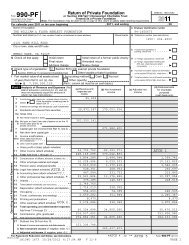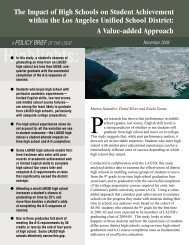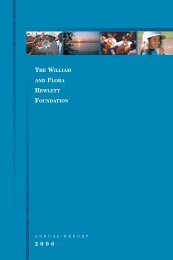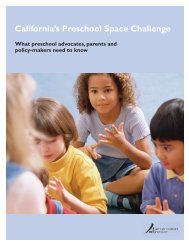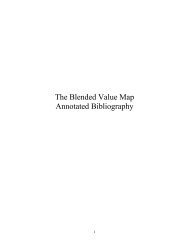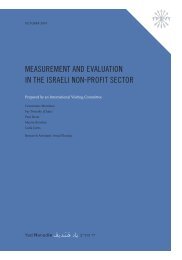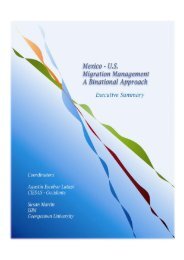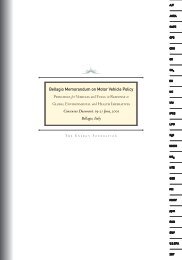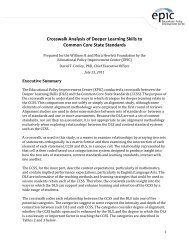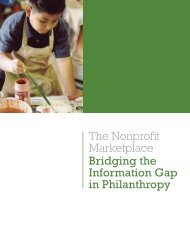EDUCATION FOR LIFE AND WORK - Hewlett Foundation
EDUCATION FOR LIFE AND WORK - Hewlett Foundation
EDUCATION FOR LIFE AND WORK - Hewlett Foundation
Create successful ePaper yourself
Turn your PDF publications into a flip-book with our unique Google optimized e-Paper software.
Education for Life and Work: Developing Transferable Knowledge and Skills in the 21st Century<br />
6 <strong>EDUCATION</strong> <strong>FOR</strong> <strong>LIFE</strong> <strong>AND</strong> <strong>WORK</strong><br />
is transferable knowledge, including content knowledge in a domain and<br />
knowledge of how, why, and when to apply this knowledge to answer<br />
questions and solve problems. We refer to this blend of both knowledge<br />
and skills as “21st century competencies.” The competencies are structured<br />
around fundamental principles of the content area and their relationships<br />
rather than disparate, superficial facts or procedures. It is the way in which<br />
the individual and community structures and organizes the intertwined<br />
knowledge and skills—rather than the separate facts or procedures per<br />
se—that supports transfer. While other types of learning may allow an individual<br />
to recall facts, concepts, or procedures, deeper learning allows the<br />
individual to transfer what was learned to solve new problems.<br />
The new Common Core State Standards in English language arts and<br />
mathematics and the NRC science framework are likely to strongly influence<br />
educational policy and practice in the coming decades. The committee<br />
reviewed these documents and compared them with our definition of deeper<br />
learning and with recent lists of 21st century skills, revealing important<br />
areas of overlap. The goals included in the new standards and the NRC<br />
science framework reflect each discipline’s desire to promote deeper learning<br />
and develop transferable knowledge and skills within that discipline.<br />
For example, both the mathematics standards and the science framework<br />
include a “practices” dimension, calling for students to actively use and<br />
apply—i.e., to transfer—knowledge, and the English language arts standards<br />
call on students to synthesize and apply evidence to create and effectively<br />
communicate an argument. Our review leads to three conclusions<br />
(see Chapter 5):<br />
• Conclusion: Goals for deeper learning and some 21st century competencies<br />
are found in standards documents, indicating that disciplinary<br />
goals have expanded beyond their traditional focus on basic<br />
academic content. A cluster of cognitive competencies—including<br />
critical thinking, nonroutine problem solving, and constructing and<br />
evaluating evidence-based arguments—is strongly supported across<br />
all three disciplines.<br />
• Conclusion: Coverage of other competencies—particularly those<br />
in the intrapersonal and interpersonal domains—is uneven. For<br />
example, standards documents across all three disciplines include<br />
discourse and argumentation (which includes both cognitive and<br />
interpersonal facets), but the disciplines differ in their view of what<br />
counts as evidence and the rules of argumentation. This uneven<br />
coverage could potentially lead to learning environments for different<br />
subjects that vary in their support for development of 21st<br />
century competencies.<br />
Copyright © National Academy of Sciences. All rights reserved.




